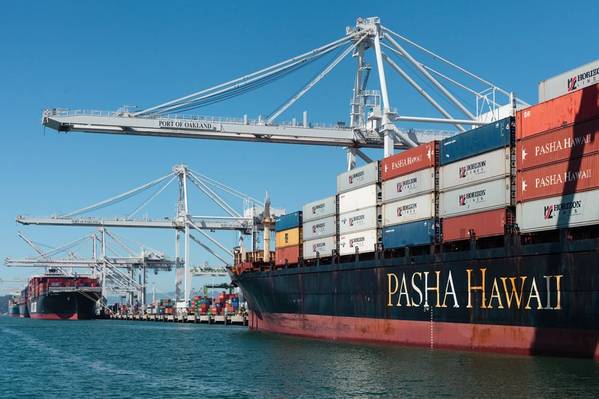
Boss credits 'all links in the supply chain' with comeback from 2014 low point
In 2014, stalled negotiations over a new waterfront labor contract crippled ports from San Diego to Seattle. Today, a number of those ports are handling record cargo volumes.
What changed? At the Port of Oakland, it was collaboration, according to Executive Director Chris Lytle.
“All links in the supply chain came together to dig us out of the hole,” Lytle told an audience of 300 this week. “Labor…management…cargo owners…everyone joined in common purpose – to make Oakland better.”
Lytle recounted Oakland’s resurgence for the Board of Marine Underwriters of San Francisco. He traced a four-year journey that began when West Coast employers and dockworkers reached a protracted bargaining impasse. It climaxed this January when Oakland reported record volume of 2.42 million 20-foot cargo containers for 2017.
Recovery was slow, but steady, Lytle said, requiring transformation of the Port’s operating model. It was also an existential imperative.
Lytle said West Coast ports leaked business to East Coast competitors as the labor impasse paralyzed freight. On top of that, Congress threatened to intervene in future port labor negotiations.
Faced with grim prospects, change had to happen, the Oakland boss told his audience. Here’s how it unfolded in Oakland:
Those changes turned around the Port’s operating performance, Lytle said. Two other developments completed Oakland’s transformation: 1) dockworkers and employers approved a contract extension through 2022 ensuring labor peace; and 2) tenants went all in at the Port committing nearly $800 million for capital investment.
“None of this would have happened without all parties collaborating on change,”Lytle explained. No mistrust…no misunderstandings…no misalignment…everyone was at the table and the result was a roadmap to a better future.”
Lytle said the Port’s Task Force has grown to 50 members. It meets quarterly to refine Oakland operations, he added.


